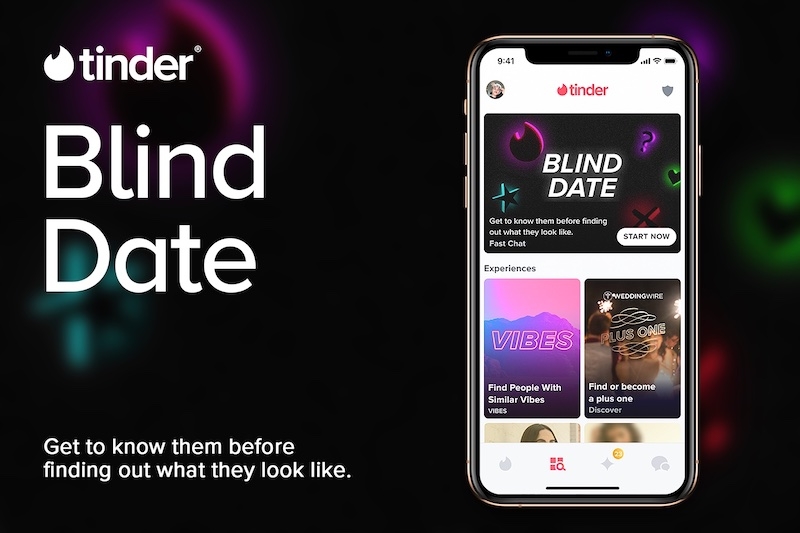When was the last time you went on a blind date (or nearly agreed to one)? For some, it was probably when your auntie mentioned a son/daughter of her friend who’s your age. For others, it could’ve been when your friend said he/she has a colleague whom you should meet. Well, what if we told you that you can go on one via a dating app?
Among Tinder’s new features this year is Blind Date — and it’s exactly what you think it is. You can find it under the interactive Explore page in the app. It also serves as an extension of the existing Fast Chat feature, where users are paired up through fun games and prompts, before they can mutually agree to view each other’s profiles.
Also read: Shoot Your Shot, But Safer: Vaccine Stickers Debut on Dating Apps
How does the Tinder Blind Date feature work?

Image credit: Delmaine Donson via Canva Pro
According to a statement from Tinder, “Blind Date gives the daters of today a low-pressure way to put their personality first and find a match they truly vibe with.” To use this latest feature, the first step is answering a short series of icebreaker questions, where members are paired based on commonalities.
Then, they’ll have to enter a timed chat, where the only details they can view about the other person are the answers to the earlier icebreaker. This includes prompts such as “It’s OK to wear a shirt ____ times without washing it” and “I put ketchup on____.” Finally, when the timer runs out, it’s only then that members can Like the other person’s profile. From there, they’ll find out if they matched, or one opted to get paired with someone else.

Image credit: Tinder Newsroom Official Website
Sounds pretty interesting, right? Whether or not this is something you’d try, you can’t deny that basing first impressions on conversations — rather than photos — is a breath of fresh air!
At the same time, though, we can think of several “odd” ways this could backfire. But hey, that’s a discussion for another day.
Also read: Yes, Travel Can Make or Break Relationships & Here’s How
As of writing, the new Tinder Blind Date feature is only available in the United States. It’s expected to roll out globally “in the coming weeks”.




